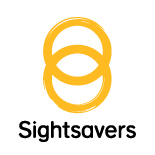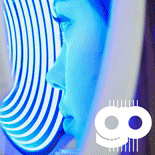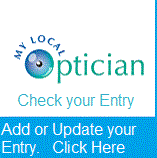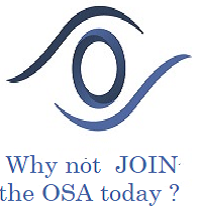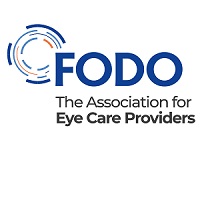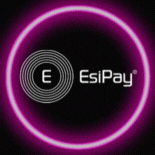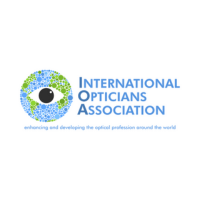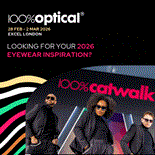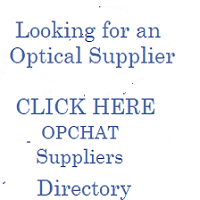Making Optical Services Accessible to Low Vision Patients
Visualise Training and Consultancy have developed an innovative resource pack making it easier to refer patients to sight loss services.
On a visit to the optician or the hospital eye clinic, you would think it would be a breeze for someone like myself, for whom even the phrase visual impairment could be a wild exaggeration. You wouldn’t expect me to have to worry too much about it being a bit of a bumbling experience, knocking things over as I go, just to get into the place.
If you have low vision, I’m sure you will relate to this as you bump along, going about your daily life, hoping for the best. Ah, the optometrist! You allow yourself a smile, I’ve done the same. For once, no knocks, no making a terrible fool of myself. And to be honest, on most occasions when I’m out and about I can make a very big fool of myself, even with my assistance dog, Zodiac, at my side!
Bumping into the optician
But it isn’t so easy-peasy at the optician or eye clinic, is it? I often find myself struggling to get around these places, never quite sure where I’m supposed to be going, left, right, forwards, backwards or in some sort of silly circle. It can be more testing than the eye test itself.
And yet, it would only take a few simple adjustments to make a huge difference to people like me. With some basic training for staff in understanding and attitudes, together with some small improvements in the layout and access to buildings, the expectation of it being a monumental stress to attend a clinical appointment could fade away.
In the UK, there are already two million of us with low vision and that number is expected to double by 2050 so it’s worth looking at the problem now and getting a solution in place.
Lighting the way
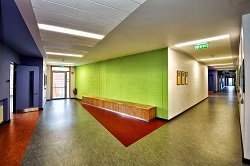
Like walking in a reasonably straight line, it isn’t all that difficult. Many people with limited vision are more than able to navigate even the most complex of buildings if their way is clearly lit. Good lighting is all about continuity. But patchy lighting – lighter in one area, darker in another – is the enemy of the person with low-vision. If you don’t experience low vision yourself, just think back to when you’ve been driving in bright, shifting sunlight. One moment everything’s in silhouette, the next it’s dazzling bright like a spotlight is beaming down on the road. Suddenly, you’re a danger to yourself and everyone in your path.
Paint it big

Then we come to the colour coding, which is supposed to make life simple, except that it often does the opposite. Staff tell you to ‘follow the blue line to your next appointment’. This sounds good until you realise the blue line is a bit thin. As you squint and peer, you’re not sure if you’re following a line or a crease in the linoleum. If the lines were bigger and bolder, it would make things so much easier and come to think of it, they could paint the whole of the walls and the floors blue.
Standing room only
Then there are the waiting areas. If chairs stand out from their surroundings and are visible to low vision patients by making them a different colour from the walls and floors they stand against, you wouldn’t find yourself suddenly sitting on the floor.
It’s transparent
To someone with low vision, like me, the problem with glass is that it doesn’t look like anything until – BANG! – you’ve walked straight into it! This is the moment you really wish you were invisible!
Learning to communicate
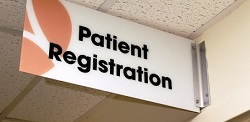
As many staff don’t know how to guide a low vision patient, why isn’t this within their mandatory training?
As a low vision patient arriving for an appointment in a building you are unfamiliar with, not being greeted personally can be disconcerting. Being asked to ‘sit over there’ doesn’t mean much when you don’t have the vision to follow a pointed finger or a turned head. Sit where? Then there are those who tell you to ‘follow me’. But you can’t see a ‘me’ to follow. It all gets a bit perplexing as you stand there and scratch your head. Yet with a simple personal greeting, thoughtful directions, the offer to act as guide, most of us will be fine.
Ready, steady, go!
When a low vision patient comes into a clinic or opticians, or enters an examination room, communication could easily be modified. I am sometimes asked to read from a chart. This would be fine if my notes didn’t clearly state that I can only see hand movements and not letters. Then when I’m asked to describe hand movements, or the number of fingers being held up, it will be a pale hand held up against light coloured clothing so I can’t see anything!
The same applies for low vision patients who can read from vision charts. You might be asked to distinguish a faint light on a white background. This is quite baffling because even fully sighted patients would probably struggle. Wall charts are another thing that could easily be adjusted. They tend to be projected or mirrored images set up at a distance too remote for many low vision patients.
Are low vision patients, getting a fair deal? Where did the portable Snellen charts run away to? It’s no use having a chart 6 metres away if you can only read it from1 metre.
Big it up
As much as good communication, lighting and design, and the right sort of technological innovation are vital, smaller things matter too. Why aren’t appointment letters sent to low vision patients in larger or bolder than average print or email and text options offered? Why do a clinic’s or optician’s appointment notes not automatically specify if a patient is low vision and may need assistance? Where are the leaflets in these places detailing available support services? And why do you never see magnifiers for low vision displayed alongside Gucci frames in opticians? These are life-enhancing pieces of equipment and need to be displayed loud and proud.
It seems funny how many garden centres and pound shops seem louder and prouder about magnifiers than opticians!
At the end of the day
A trip to the eye clinic can be exhausting, mentally and physically. When it’s not even about the eye test that makes you feel like this but navigating a difficult space and dealing with insensitive staff, it becomes unpleasant.
The solution is not mind bogglingly difficult. It’s about disability awareness training with not just a medical but a social perspective.
Thanks for the diagnosis
So now you have a badge to say you’re an AMD, Glaucoma or RP where do we go next. Heigh-ho, Heigh-ho it’s off to home I go.
However, this should be not be case, low vision patients should be correctly referred to support services immediately for much needed help.
Join our Seeing Beyond the Eyes CET roadshow to learn more about how you might make your services more inclusive for low vision patients by booking your free place via this link
If you work in the optical sector, download our helpful Resource Pack for Professionals which includes details of national and condition specific support services along with suppliers of assistive technology at http://www.visualisetrainingandconsultancy.com/resource-pack-health-pros/
Dan Williams is founder of Visualise Training and Consultancy
Take a look at other clinical briefing papers published by PHN








